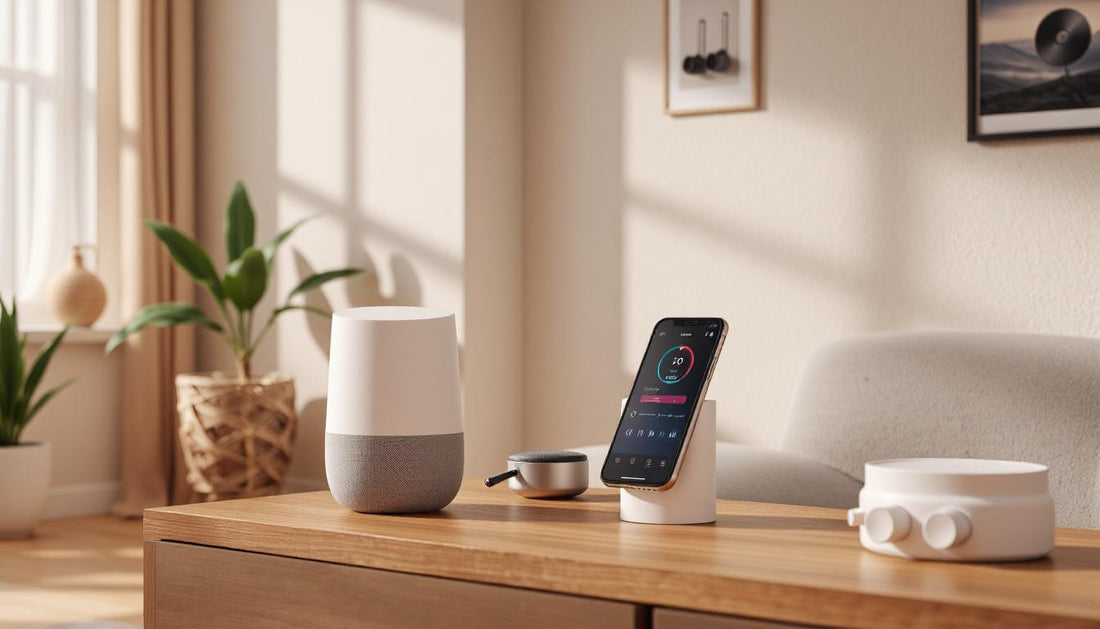
Setting Up a Multi-Zone Home Audio System
Share
Introduction
Creating a multi-zone home audio system used to be a luxury reserved for high-end homes with custom installations. Today, thanks to affordable technology and clever planning, even budget-conscious homeowners can enjoy seamless sound in multiple rooms. Whether you're hosting a party, cooking in the kitchen, or relaxing in the backyard, having synchronized audio throughout your space is now more achievable than ever.
In this blog post, we'll explore how to set up a cost-effective multi-zone home audio system. From choosing the right components to wiring tips, control options, and smart streaming solutions, this guide will help you build a professional-sounding system without overspending.

Understand What a Multi-Zone System Involves
A multi-zone audio setup allows you to play different audio sources in different rooms (zones), or the same audio throughout your home. Each zone can be independently controlled in terms of volume, playback, and source. This provides a tailored listening experience in each room, which is especially useful for families or shared living spaces.
There are two main types of multi-zone systems:
- Wired Systems: Use physical cables to connect speakers to amplifiers and audio sources. These tend to be more reliable and offer higher audio quality.
- Wireless Systems: Use Wi-Fi or Bluetooth to connect smart speakers across rooms. These are often easier to set up and integrate with smart home ecosystems.
A budget-friendly setup might use a mix of both, depending on what you already own and your home's layout. Hybrid setups are increasingly popular because they combine flexibility with performance.
Choose Budget-Friendly Audio Equipment
The key to staying within budget is choosing components that offer the best balance of quality and affordability. Here are some recommendations:
- Amplifiers: Look for multi-zone or stereo amplifiers with A/B switching. Brands like Dayton Audio, Pyle, and Monoprice offer economical multi-channel amplifiers that support multiple zones.
- Speakers: In-ceiling, in-wall, or bookshelf speakers can be found at various price points. Polk Audio, Micca, and Yamaha offer solid options that don't break the bank but still deliver decent performance.
- Streaming Devices: Affordable devices like Chromecast Audio (used), Amazon Echo Dot, or Wiim Mini can stream audio from apps like Spotify, Apple Music, or TuneIn Radio.
- AV Receiver: If you already have an AV receiver with zone output (Zone 2, Zone 3), it can be the heart of your system without extra cost. Some even support HDMI passthrough and zone syncing.
- Speaker Switches: Passive speaker selectors allow one amp to power multiple rooms, making them ideal for budget-conscious setups.

Wiring and Power Considerations
Wiring is often the most overlooked part of a home audio setup, yet it's crucial for clean audio transmission and safety.
- Wire Choice: Use cost-effective, high-quality speaker wire like 14 gauge or 16 gauge wire. It delivers excellent performance for less and is easy to work with. Baboom Baboom offers great deals on durable CCA wire suitable for whole-home audio installs.
- Wire Routing: Plan routes through attics, crawlspaces, basements, or baseboards. Use wall plates and cable management tools to keep things clean and organized. Measure your wire lengths beforehand and label each cable end for easy troubleshooting.
- Power: Ensure you have proper power sources near your equipment, including surge protectors or UPS units to protect your system from electrical spikes. Consider using power strips with USB ports for charging streaming devices.
- Speaker Placement: Strategically place your speakers in each zone to maximize coverage and minimize sound reflections. Wall-mounted or ceiling-mounted designs work best for clutter-free installations.
Smart Control on a Budget
Managing your zones can be simple with affordable smart devices and intuitive control systems:
- Voice Assistants: Amazon Alexa or Google Assistant devices let you control audio with voice commands. You can create multi-room groups for synchronized playback or control individual rooms by name.
- Mobile Apps: Many budget amplifiers and streamers include their own app for controlling zones and sources. Some apps offer EQ controls, scheduling, and remote access.
- Manual Controls: If you're going ultra-budget, physical A/B speaker selectors or passive volume knobs can allow control over each zone. Wall-mounted rotary dials can adjust volume locally without relying on apps.
- Universal Remotes: Consider affordable universal remotes that work with your receiver and streaming devices to unify control across your setup.

Tips to Save Without Sacrificing Quality
- Start Small: Begin with two zones (like a living room and kitchen) and expand as your budget allows. This phased approach keeps your investment manageable.
- Use Existing Equipment: Repurpose old stereo gear, computer speakers, or unused Bluetooth speakers as part of your system. Even older AV receivers can work if they have analog inputs or outputs.
- Buy Refurbished or Open Box: Save big on electronics by shopping certified refurbished or open-box items from reputable sellers. Many come with warranties and function like new.
- DIY Installation: Skip installer fees by using guides and YouTube tutorials. Just ensure you're comfortable with basic wiring, wall cutting, and safety practices. Enlist a friend if needed.
- Bundle Purchases: Look for speaker or amp bundles, which often cost less than buying components individually. Some online retailers offer package deals for entire multi-zone systems.
- Plan Ahead: Even if you're only wiring for one or two zones now, consider running extra cables or conduits for future expansion. This saves time and money down the road.

Conclusion
Whether you're enhancing your everyday listening or preparing for your next big gathering, a multi-zone setup will transform how you experience music at home. And best of all, it can be done without draining your wallet. With a thoughtful approach, even modest systems can achieve impressive results.
Multi-zone audio isn't just about convenience—it's about creating a personalized soundscape that matches your lifestyle. So take your time, plan your zones, and enjoy music the way it was meant to be heard: everywhere. Need support or have technical questions? Experiment with our Expert Software Tools to get customized wiring insights. Visit our Articles Page and explore other blogs like this.








